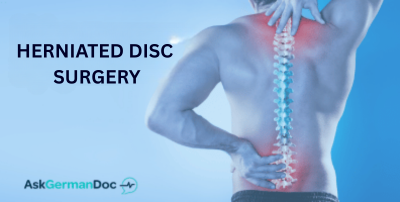MAKOplasty® is a groundbreaking robotic-assisted technology for partial and total knee replacement that combines 3D planning with millimeter-level precision. Developed by medical technology leader Stryker, this innovative approach improves implant placement, reduces trauma to surrounding tissues, and shortens recovery time. It is especially valuable for patients suffering from severe osteoarthritis or knee joint degeneration.
What Is MAKOplasty® and How Does It Work?
MAKOplasty® is a computer-guided surgical system that enhances traditional knee replacement by integrating preoperative 3D planning and real-time robotic assistance. The process begins with a CT scan, which generates a detailed 3D model of the patient’s knee. Based on this model, the surgeon creates a customized surgical plan tailored to the patient’s anatomy.
During the procedure, the surgeon controls a robotic arm that helps execute bone cuts with exceptional accuracy, maintaining the integrity of surrounding ligaments and soft tissue. The robot only allows the surgeon to operate within a predefined area, significantly reducing the risk of error.
How Is MAKOplasty® Performed?
MAKOplasty® follows a step-by-step protocol to ensure optimal outcomes:
-
Preoperative Imaging: A CT scan of the knee joint is performed to generate a three-dimensional image used for planning.
-
Surgical Planning: The surgeon uses the 3D model to map out the exact implant size, orientation, and alignment—down to the millimeter.
-
Robotic Assistance: During surgery, the robotic system ensures precise bone preparation and implant placement according to the pre-planned blueprint.
This combination of planning and robotic execution results in greater consistency, reduced soft-tissue damage, and faster functional recovery.
Where Did MAKOplasty® Originate?
MAKOplasty® was first introduced in the United States and used at leading institutions such as Mayo Clinic and the Hospital for Special Surgery (HSS) in New York. Since 2016, its use has expanded to include total knee replacements, not just partial ones. In Germany, the technology is now available in several certified orthopedic clinics, particularly those specializing in robot-assisted joint surgery.
What Are the Advantages Compared to Conventional Knee Surgery?
Compared to traditional knee replacement techniques, MAKOplasty® offers several clinical advantages:
-
Higher precision in implant alignment, which enhances long-term functionality and durability
-
Minimally invasive approach, resulting in less trauma and faster recovery
-
Reduced risk of postoperative complications such as misalignment, instability, or implant loosening
-
Individualized treatment, since each surgery is tailored to the patient’s specific knee anatomy
Traditional surgery often uses standardized components, while MAKOplasty® uses data-driven customization to ensure a more natural joint movement and less postoperative discomfort.
Are There Risks with MAKOplasty®?
Like any surgical procedure, MAKOplasty® involves certain risks, even though the overall safety profile is favorable:
-
Infection risk is present in any invasive procedure, although sterile protocols reduce the likelihood.
-
Radiation exposure from the CT scan is minimal but should be noted.
-
Thrombosis risk exists postoperatively but can be mitigated through standard preventive care.
-
Hardware-related complications such as implant wear or misplacement are rare thanks to the robotic guidance.
According to multiple clinical studies (e.g., by the American Academy of Orthopaedic Surgeons), patients who undergo robotic-assisted knee replacement report less postoperative pain and improved function compared to conventional techniques.
What Does MAKOplasty® Mean for Patients?
Patients benefit from:
-
Faster return to daily activities
-
Lower revision rates
-
Improved joint function and satisfaction
However, not every patient qualifies for MAKOplasty®. A detailed medical assessment by a board-certified orthopedic surgeon is essential. Patients with complex deformities, severe osteoporosis, or advanced joint infections may not be suitable candidates.
Sources
-
Stryker Corporation – MAKO SmartRobotics™ https://www.stryker.com
-
Mayo Clinic – Robotic-Assisted Knee Replacement https://www.mayoclinic.org
-
Hospital for Special Surgery (HSS) https://www.hss.edu
-
AAOS – American Academy of Orthopaedic Surgeons https://www.aaos.org
Legal Disclaimer
This article is for informational purposes only and does not replace a personal consultation with a qualified physician. It does not promote specific surgical outcomes or imply guaranteed benefits. All content complies with the Heilmittelwerbegesetz (HWG) and is based on publicly accessible, medically recognized sources.


